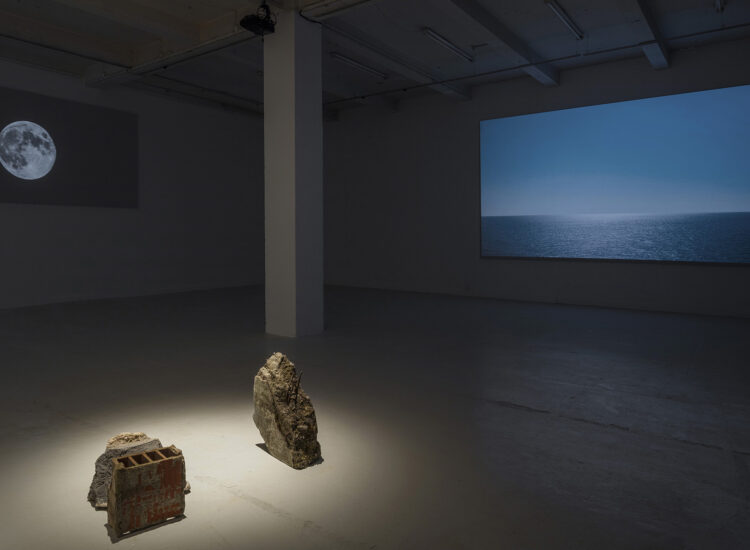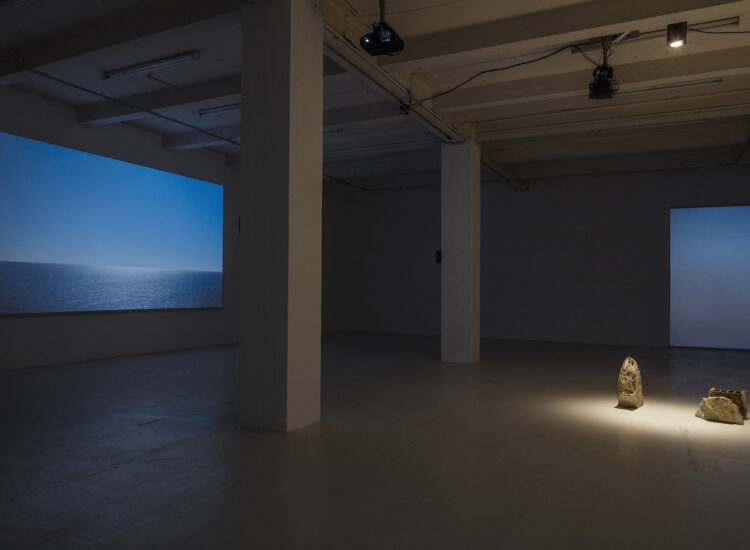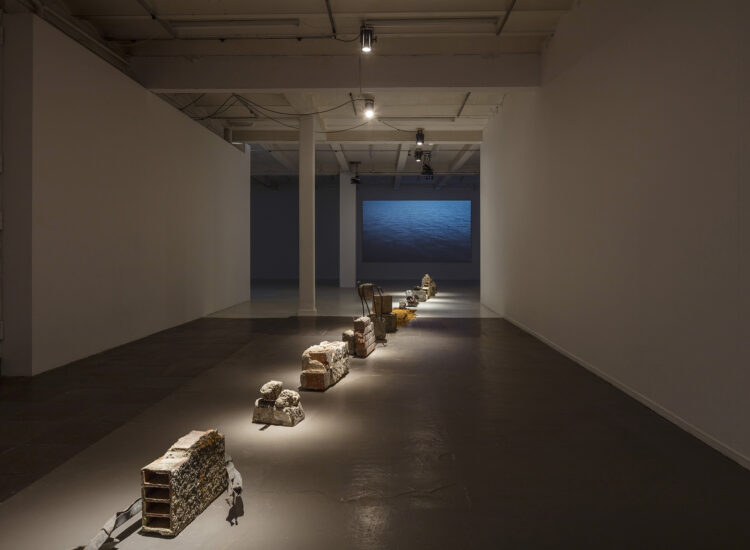Line of the horizon
Line of the Horizon, 2017. Installation: four videos (one of which is with sound), debris, variable size.
Line of the Horizon is a spatial installation with integrated video, audio and sculptural elements.
The visual elements of the video works are dominated by atmospheric motives of the sea, the sky, the moon and the sunlight that, even though apparently open for interpretation, each in their way illustrate essential elements in the much more concrete narrative presented in the voiceover accompanying the central video of the installation. The voiceover is a partly satirical text written by the artist inspired by Isaiah Berlin’s essay Two Concepts of Liberty from 1958. It tells a story about an encounter between two, presumably very different, ideologies embodied in two main characters. The meeting takes place on neutral ground, at sea, where both of them were last seen. One is the artist Bas Jan Ader, who was a real person, and the other is Comrade Ogilvy, an imaginary person invented by Winston Smith, the protagonist of George Orwell’s novel 1984. With this story Čirkinagić addresses the unfeasibility of casting human life in a form defined by an ideology, without some deformation of freedom taking place in the process. He says: “Homo Sapiens is a social being, but tragically trapped in social and political context predestined by his place of birth”.
The sculptural element of the installation, which forms a diagonal through the exhibition, consists of multiple fragments of debris, mainly pieces of concrete blocks, bricks and steel structures from buildings demolished in war or other incidents of political violence. The artist collected the debris from various conflict zones around the world. These he lines up, inspired by a photograph taken by the legendary war photographer Don McCullins, in which we see a boy sitting on a floor meticulously lining up pieces of shattered wall following a shelling in Sabra and Shatila. The artist’s reenactment of the boy’s act reveals that he identifies with the boy, for whom the strange game of organising fragments after destruction was an attempt to save the walls of reason from crumbling.
Čirkinagić’ own ‘line of the horizon’ is built from the characters, experiences, and information that inhabit the sphere of his inner world. He artistically abstracts the essence integrating it into a complex flow of the narrative. This artwork can thus be seen as the artist’s attempt to visualise post-traumatic wandering through the tragic absurdity of our human misunderstandings, conflicts, and wars. Just like the boy in the photograph, Čirkinagić sees art as the string that holds his universe together, preventing it from being torn apart by what he calls “the centrifugal force of nonsense that surrounds us”.









